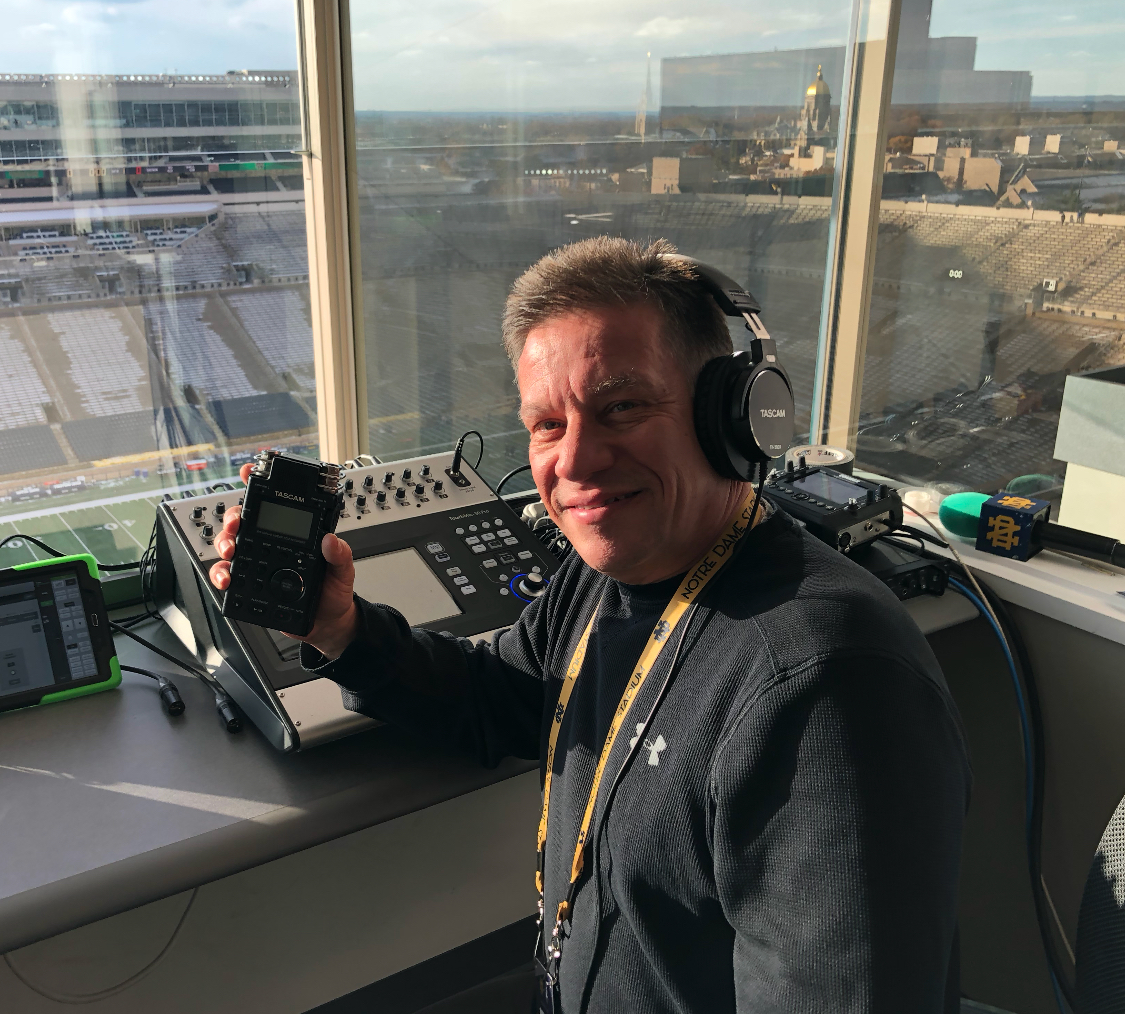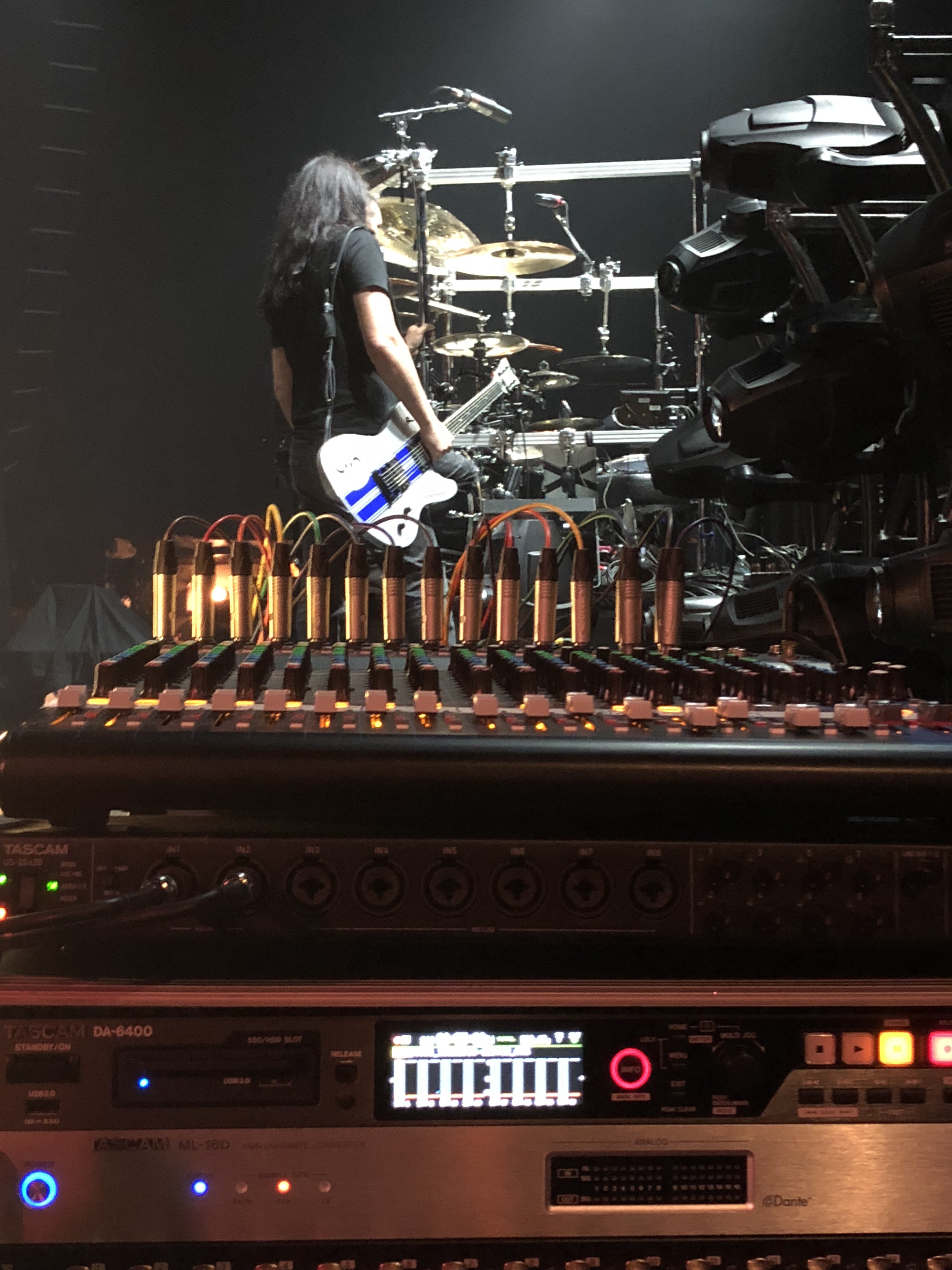
Chicago, IL-November 2018... A broadcast engineer since 1983, Bill Karambelas worked for nearly two decades as producer and chief engineer for radio legend Paul Harvey and his famed The Rest of the Story broadcasts. Throughout Karambelas' career, he has relied on TASCAM products. "TASCAM has long been a reliable name in the radio business," he recalls. "When I began in radio, we had TASCAM 122 mkII cassette decks everywhere. During my years with Paul Harvey, I had three TASCAM 122 mkII cassette decks in my rack because every commercial he read had to be taped and sent out to the clients. It wasn't like the prerecorded commercials we have now; each commercial went out live as he read it, so a copy had to be made for the advertisers."
Nowadays, Karambelas records for a variety of clients and one-off projects, mostly live performances ranging from big-league sports to music. He still relies on TASCAM recorders, especially the DA-6400 64-channel digital multitrack recorder and DA-100 mkII handheld, 2-track, linear PCM recorder.
Recently he used the DA-6400 to record a concert at Chicago's famed Vic Theater for broadcast on the SiriusXM network that featured the popular heavy metal band Disturbed, promoting their new album Evolution. "SiriusXM had a multiple camera setup, shooting video as well as recording the show for a live playback a week after the concert," begins Karambelas. "In cases like this, if it's not a live show that's going out over the air then and there, the band wants control of the final mix. You can't use the front-of-house mix as a live broadcast mix so you often have a separate engineer doing a broadcast mix. For the Disturbed concert, an engineer took a full MADI feed from the output of the mixer and recorded multitrack to a computer that would be used to create the band-approved mix. Sirius asked me to record a multitrack backup, in case something went wrong with the computer recording, and to deliver a stereo mix immediately so they could start editing video. When the approved mix was available, they'd already have everything cut to my stereo mix and could just sync up to the approved mix and go."

To ensure he could reliably deliver the multitrack emergency backup Karambelas, recorded a 16-track analog stem mix to his TASCAM DA-6400. "I needed a recorder that was absolutely stable," he reports. "I didn't want to take a chance of a computer lockup. The DA-6400 is a dedicated recorder that won't stop recording no matter what. Of course, it was critical to figure out how to condense 64 tracks down to 16 stems that could be turned into an acceptable backup, and at the same time, I needed to produce that two-track. I also had to have a small footprint and be out of everyone's way, just offstage on stage left, amongst the guitars and backline."
To address these challenges, Karambelas routed the 16-channel analog stems to a TASCAM BO-16DX/IN XLR to D-sub Input Adapter. He connected the adapter's D-sub outputs to a TASCAM ML-16D 16-channel analog-to-Dante converter, which in turn plugged into a Dante card in the DA-6400. With that, he was set to record his multitrack emergency backup.
The two-track mix presented other challenges. "For the two-track mix, I put the DA-6400 into Input Monitor mode and used the analog Loop outputs from the ML-16D Dante converter to send the 16 stems to a small mixer," he reports. "I used the mixer to build my two-track mix on the fly." Karambelas routed the mixer's stereo outputs to a TASCAM US-20x20 USB 3.0 audio interface and recorded his stereo mix on a Windows laptop. "As with other TASCAM equipment, I like the US-20x20's reliability," he offers. "With some interfaces, I've had lockups doing simple two-track recordings for no apparent reason. With the US-20x20, I have no stability issues at all."
Building a two-track mix on the fly is not easy when working with stems that include background vocals and effects that you're not familiar with in advance. "I did the best I could," Karambelas recalls, "and I turned in the initial two-track mix immediately, but I was happy to have the DA-6400's 16-track recording. I immediately went home and built a two-track mix that I felt more comfortable with, and within 24 hours I shot that to SiriusXM to use for video editing instead of my first attempt."
Karambelas also brought his TASCAM DR-100 mkII to the Disturbed show so he could record SiriusXM Octane host Grant Random interviewing the band's singer. "I have been using the DR-100 mkII for awhile," he confirms. "I record Notre Dame football games in stereo on location for the Notre Dame radio network, although the games are broadcast in mono. I started doing sports broadcasting in 1986, and I used to have to carry a big tape deck. Now I carry the DR-100 mkII, a small handheld two-track recorder. I record interviews by plugging a mic into each input and recording in stereo, then go in later and balance the audio to correct for mic technique issues."
The recordings Karambelas made at the Disturbed concert proved a success. "Everything ran perfectly and performed exactly as planned," he declares. "Everyone was happy. For me, the best part was that the TASCAM DA-6400 was plug-and-play. I didn't spend time troubleshooting; I just plugged everything in and recorded the show."